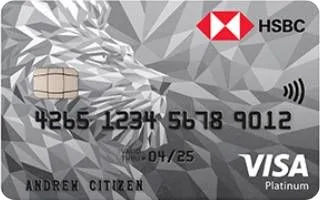Balance Transfer

We’re reader-supported and may be paid when you visit links to partner sites. We don’t compare all products in the market, but we’re working on it!
This depends on what you want. Do you want heaps of rewards, to pay as little as possible or some other feature? No matter what you're after, there are plenty of good cards out there. With our top picks, comparison table and expert tips, you're just a few clicks away from finding the best card for you.
Use this table to compare cards based on the features you want and the rates and fees that you can afford.
Even though there's no one "best" credit card for everyone, there are a few things that have universal appeal, including:
How important each of the above points is to you will help you decide which card will best fit your wallet.
When you're looking for the best credit card, choosing a type or "category" first means you don't have to look at every card on the market. While there are hundreds of different cards on offer, there are really only five main types: balance transfer cards, no annual fee cards, frequent flyer and reward cards, low rate cards, and no interest, flat fee cards.
Different cards will work for different spenders (or savers). Here's how to find the best one for you.
What are they?
These credit cards give you a low or 0% interest rate for a period of time when you move your current credit card balance over to the new card. Having the interest-free period means you save on charges and can pay off your debt faster.
If you're paying interest on more than one credit card, you can also use a balance transfer credit card to consolidate the cards into one account. There are even some balance transfer cards that let you move debt from personal loans. As well as saving you money on interest charges (and often fees), this means you only have one bill to pay each month.
How to find the best balance transfer credit card
✅ Look for: A 0% balance transfer rate that lasts long enough for you to pay off your debt. The introductory period usually ranges from 6 to 36 months and after that, a higher interest rate kicks in. If you can pay off what you owe before that happens, you'll save more with a balance transfer deal.
⚠️ Watch out for: A balance transfer fee that eats too much into your savings. Not all offers charge one, but if they do, it's typically charged as 1-3% of the money you transfer.
What are they?
Frequent flyer and rewards credit cards earn you points on your everyday spending, which you can then use to get travel, gift cards, experiences and more. There are also some cards that offer cashback rewards.
Lots of these cards also come with big bonus point offers when you first sign up, which can give you hundreds of dollars in value. But most frequent flyer and rewards cards also have higher annual fees and interest rates than other cards. So people who can pay off their balance each month and use all the points and perks will get the best value.
How to find the best frequent flyer or rewards credit card
✅ Look for: An introductory offer with at least 80,000 bonus points or $200 cashback. This will often balance out the card's annual fee in the first year. The points you earn per $1 spent (the "earn rate") will help you work out the value beyond that.
⚠️ Watch out for: Standard interest rates and annual fees that are higher than you're prepared to pay. For example, if you're only getting $250 of value from rewards and other perks but your annual fee is $450, it's not worth it.
What are they?
This type of credit card comes with a $0 annual fee for the first year, or for life. In comparison, some cards have annual fees of $450 or more. This makes a no annual fee card a good choice when you're looking for a low-cost card, especially if you usually pay off your balance each month (which cuts down on interest charges).
With most no annual fee credit cards, the value really is driven from that $0 yearly cost, so you won't usually get premium perks and rewards. But there are frequent flyer and rewards cards that offer $0 annual fees for the first year, which gives you time to decide what you value more.
How to find the best no annual fee credit card
✅ Look for: How long you'll get the $0 annual fee and any other features you want on the card. If you get a card that has interest-free days on purchases, check how this works so you can avoid both an annual fee and interest charges.
⚠️ Watch out for: Cards that charge a high annual fee after the first year. There are also a few cards that offer an ongoing annual fee waiver if you spend a set amount each year, are a student or meet other requirements – so it pays to check the fine print (or ask).
What are they?
These credit cards offer a low interest rate on purchases, typically ranging from 8.99% p.a. to 14.99% p.a. In comparison, some other cards charge purchase rates from 18-22% p.a. There are also cards that offer a 0% interest rate for purchases for the first few months.
If you were paying off something over a year, even a 1-2% difference in the interest rate can save you money, so low rate credit cards are really valuable for people who need some breathing room.
How to find the best low rate credit card
✅ Look for: A long introductory 0% purchase period. Check how long the rate lasts and what it reverts to (the rate you'll pay on any unpaid balance). If you want an ongoing low rate, look for one below 14.99% p.a.
⚠️ Watch out for: Annual fees that will outweigh the savings of a low interest rate. And be careful if you want to withdraw cash, because cash advances usually incur a higher interest rate.
What are they?
These credit cards don't charge any interest but do charge a flat monthly fee when you use them. Just like other credit cards, you'll still need to pay a minimum amount off the balance each month. If you're not using the card and don't have any money owing, the monthly fee is usually refunded.
This is handy if you want to know exactly how much you'll be paying when you use the card (without interest calculations), but you don't want to pay for it when you're not.
How to find the best low rate credit card
There are currently only two options on the market: the CommBank Neo and NAB StraightUp. Here's the lowdown on what to think about when you're comparing them:
✅ Look for: A monthly fee that fits your budget and how much you plan to spend. The fee is based on the credit limit you choose and whether or not you use the card or carry a balance. Depending on the card, you can also get shopping deals through Mastercard Priceless, Visa Offers + Perks or CommBank Rewards.
⚠️ Watch out for: Paying more in fees than you have to. Even though you don't have to pay interest, the monthly fees can end up costing you more than interest on a standard low rate card. You can use our repayment calculator to figure out your potential savings.
Want something else from your credit card? There are lots of other credit cards on the market. So if you're after a really specific feature – such as complimentary flight vouchers or business credit cards – you can check out Finder's other guides. Or, head to the credit card homepage for more details on the different cards and features you can get in Australia.
Sometimes people will look at two or more types of credit cards – or even another payment method – when they're trying to find the best one for them. So we've answered some of the most common "which is better" questions to help you decide.
If you're focused on earning points through Qantas Frequent Flyer or Velocity Frequent Flyer, a card that earns those points makes the most sense. With some cards, the bonus points alone could be enough to get you a business class flight or holiday.
On the other hand, a rewards credit card gives you better options if you're a member of a few loyalty programs and want to transfer points between them. Rewards credit cards also give you lots more choice if travel's not part of your plans right now or you're more interested in cash rewards and retail goodies.
Low rate credit cards are better if you don't pay your bill in full every month. You'll still have to pay more than what you borrowed, but it will usually cost you less than a card with no annual fee (and therefore a higher interest rate).
A $0 annual fee card is great if you pay as you go or repay everything when it's due. This means you won't be paying interest charges anyway, so paying no annual fee means you can effectively pay nothing to use your card.
A 0% balance transfer credit card works well for credit card debt if you can pay the debt off within 3 years. This is because the 0% introductory rate usually lasts for between 6 and 36 months.
If you want smaller repayments spread out over a longer period of time, personal loans offer terms from 1 to 5 years – and some offer up to 10 years. So you'll pay interest, but it could make it easier to chip away at what you owe. Personal loans also let you consolidate different types of debts, including credit card debt, other loans and even some buy now pay later debt.
A no interest credit card with a flat, monthly fee might be good if you want to be able to pay off what you buy over time without being limited to selected retailers (which you sometimes are with Afterpay, Klarna and some other BNPL plans). These credit cards are also better if you want to build up your credit history, because most BNPL plans don't add to your credit report.
But if you mostly shop with the partnered brands and can make all of your payments on time (to avoid late fees), you could use a platform like Afterpay without any costs. And if you already have an account that you're happily using, there's probably no reason to get a credit card – unless you want to build your credit history.
There isn't one overall "best" credit card in Australia, but we still hear this question all the time. That's why Finder has looked at hundreds of credit cards to find our top picks for 5 popular types of credit card.
Based on extensive user testing and thousands of credit card comparisons, we've evaluated cards based on criteria that people care about and narrowed it down into a few broad categories.
Keep in mind, however, that our "top" picks may not always be best for you. Based on your situation, you may find certain features to be more or less important, so compare your options before you apply.
While we looked at a range of cards available to us for our "top" picks, we did not compare all the products available in the market. Within each category, we narrowed down our choices based on the cards available through Finder as well as the following:
We value our editorial independence, basing our comparison results, content and reviews on objective analysis without bias. But Finder may receive compensation when you click links on our site. Learn more about how we make money from our partners.
Back to topSo we know the best credit card for you might be different from the best credit card for someone else. We also know how to look for the best credit card – at least in theory. But how does this actually work? Let's take a closer look at a few examples of common spending patterns and cardholders. We've given them names to make them easier to relate to – and if one of them sounds like you, you can look at the suggested credit cards to kickstart your comparison.

Credit card spend per month:
$200 (small spender)
Pays balance in full every month?
Mostly, but not always
Travels?
Very rarely
Suggested card 1:
No annual fee credit card
Allison doesn't use her credit card very often, so a no-frills card with a $0 annual fee might make sense. Since she doesn't spend enough to maximise any rewards points, she could look for a low cost card and just make sure that the interest she'll pay won't outweigh the no annual fee savings.
Suggested card 2:
Low rate credit card
A low rate credit card could save Allison money when she carries a balance. For example, a $200 balance paid off over 3 months on a card with a 19.74% interest rate would cost $6.62 in interest. The same balance on an 8.99% interest card would cost only $3 in interest.

Credit card spend per month:
$4,000 (big spender)
Pays balance in full every month?
Always
Travels?
Often, at least a few times per year
Suggested card 1:
Frequent flyer credit card
A frequent flyer credit card could earn Carl some bonus points as well as 48,000 points over the course of the year. As long as he makes use of the features and points, a card with an annual fee of less than $960 would provide value (assuming $20 of value per 1,000 points).
Suggested card 2:
Rewards credit card
If Carl flies with a few different airlines or prefers rewards other than flights, a rewards credit card could offer more value. Points can be redeemed for merchandise, gift vouchers, statement credits, charitable donations and more. These cards also often have bonus points.

Credit card spend per month:
$2,000 (average spender)
Pays balance in full every month?
Rarely, balance carried for 2 years
Travels?
No
Suggested card 1:
0% balance transfer offer
If Debbie stopped spending and paid that $2,000 balance off over 2 years on a 19.74% p.a. card, it would cost her $436.91 in interest. A 0% balance transfer for 24 months would save her that $436.91 and the same monthly payment would mean she'd pay off the debt in just 20 months.
Suggested card 2:
0% purchase and balance transfer offer
If Debbie is unable to stop spending on her credit card, a 0% purchase and 0% balance transfer offer could give her the breathing room that she needs to get on top of her debt. She essentially wouldn't have to pay any interest for a certain period of time. However, the 0% period would usually be shorter on these cards than on a card with a single offer.
Want more value from a credit card? Get started by comparing the latest offers and applying now.
Learn how to apply for a credit card when you're retired or on a pension and compare cards to find one that suits your needs.
You can use an Amex, Mastercard or Visa credit card to pay for Netflix (and most other streaming services) in Australia – find out how here.
How to get more value out of your credit card with exclusive promotions, offers and perks available to existing customers.
When you apply for a credit card online, you could receive a response within 60 seconds. Find out how you to find a card that you're eligible for and increase your chances of approval.
Whether you're employed full-time, receiving Centrelink payments or something in between, compare the different credit cards you can apply for as a single parent.
Want to factor the credit card provider into your comparison? Here are some details to help you get started.